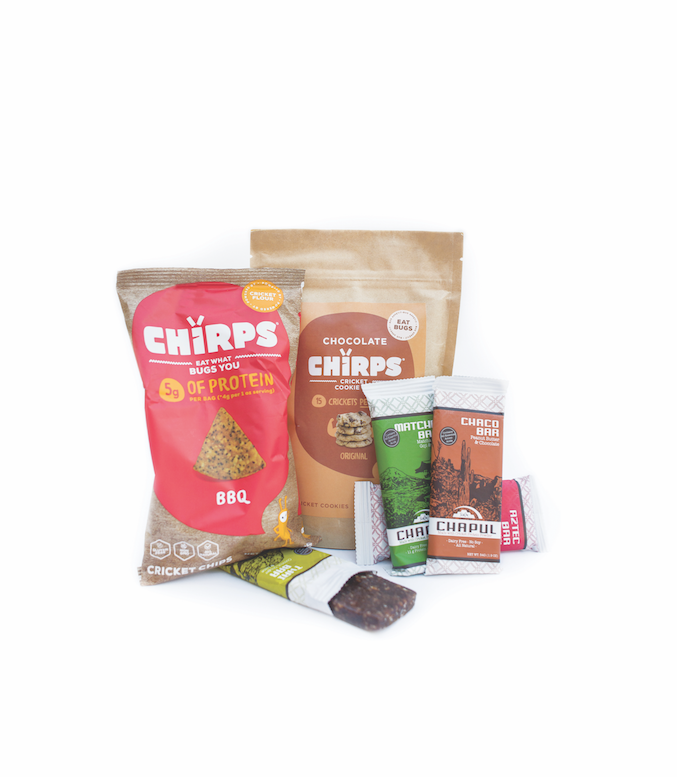About a year ago, I first learned of a company making high protein energy bars from cricket flour. My first instinct? YUCK! At least, that is what I thought until I recently had the opportunity to try some cricket products myself, including Chirps Sea Salt Chips made with corn, cricket flour and navy beans. Each chip contains one cricket! Surprisingly, they were very neutral in taste, with no off flavors. The texture and flavor reminded me of bean chips. I dipped them in a bit of hummus and it made for a satisfying snack!
More and more insect products are making their way onto the market, including cricket flour, mealworm flour and whole roasted crickets to name a few. The concept may be foreign to Americans, but eating insects has been and is still considered normal in many other parts of the world. Many adventurous eaters are beginning to experiment with edible insects for a variety of reasons including nutritive value, benefits for the environment and culinary versatility.
Sustainability
Eating insects is good for the environment. Consider the resources required to raise conventional beef cattle. It takes thousands of acres of land and millions of gallons of water to produce the grain needed to fatten the cattle for slaughter. According to Exoprotein.com, producing one pound of beef requires almost 2,000 gallons of water! Compare that to producing one pound of crickets, which requires about one gallon of water. For those concerned with the environment, adding insects to their diet as a protein source makes good sense.
Nutrition
Insects are a great source of complete protein, meaning they contain all nine essential amino acids. A 100-gram serving of Entomo Farms cricket flour contains about 58 grams of protein! Dietary protein is important for muscle growth and recovery, as well as the production of hormones and neurotransmitters. Protein also plays a role in satiation. Adding some cricket flour to a granola bar recipe would create a snack that is more balanced and filling due to the increased protein content. Aside from protein, insects contain a decent amount of micronutrients including iron, calcium, riboflavin and vitamin B12. For those following gluten-free diets, cricket flour can serve as an alternative to conventional wheat flour products in baking and cooking. The foundation of a healthy diet includes balance, variety and moderation. If your diet is lacking variety, insects are certainly an interesting food to introduce into your eating plan that also offers some nutritional advantages!
Flavor
Most people describe the flavor of insect products as nutty. Many of the products made with insects also contain many other ingredients with strong flavors, such as chocolate and dried fruits. Products on the market are offered in both the sweet and savory variety. Many of the companies that sell cricket and mealworm flours have dozens of recipes on their websites including muffins, macaroons, cricket fritters and hummus. According to entomologist Marcel Dicke, the most commonly consumed insect species across the world include ants, wasps, beetles, crickets, termites, grasshoppers and caterpillars. These make up just a few of the documented 1,900 edible insects. Learning what foods pair well with insects and how to make them most palatable could prove to be an interesting project!
Feeling adventurous? Here a few products you might be interested in.
Exo Protein Bars, Exoprotein.com
Chapul Bars, Chapul.com
Chirps Cricket Chips, Chirpschips.com
Chocolate Chirps Cricket Cookies Mix, Chirpschips.com
Related Articles:
Interesting Pumpkin Facts You Need to Know

